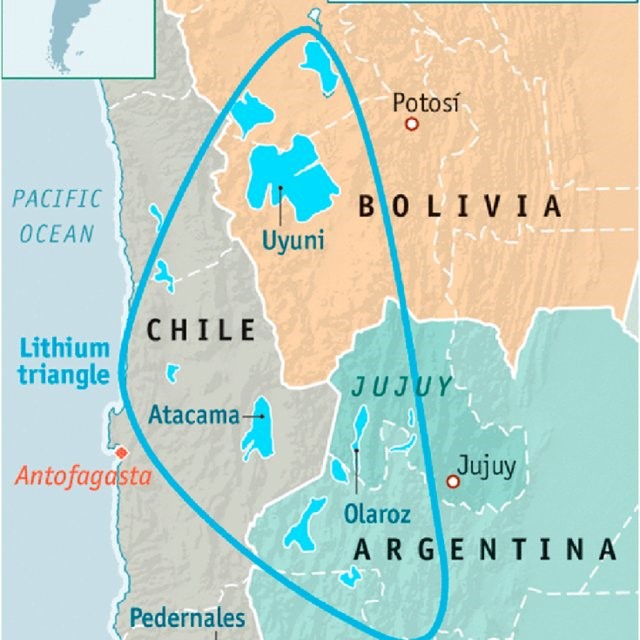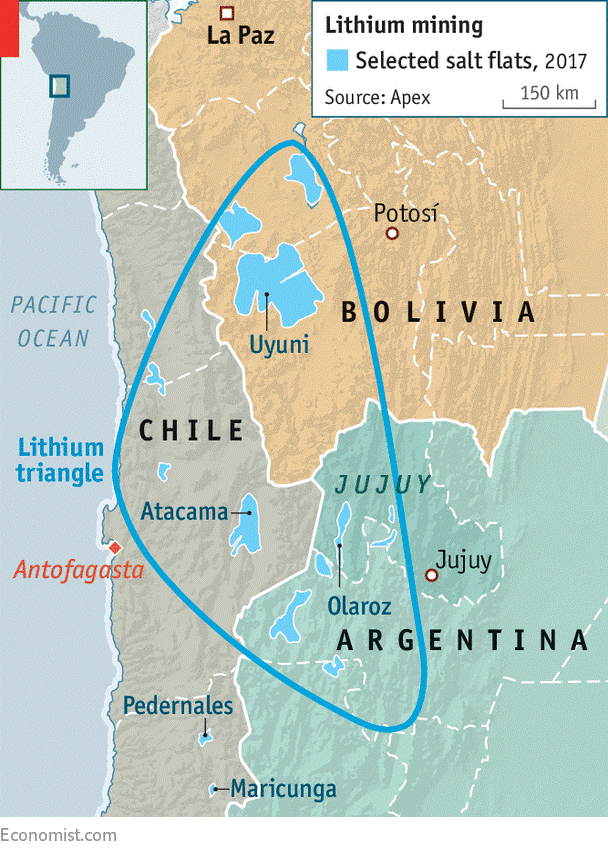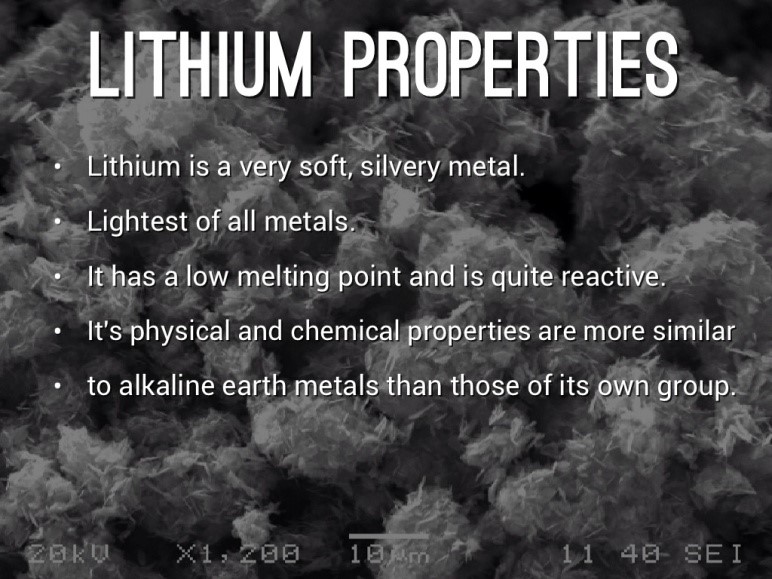Description

Disclaimer: No Copyright infringement intended.
Context
- With countries around the world scrambling to reduce emissions, rising global lithium demand and surging prices have drawn increased interest in the so-called ‘lithium triangle’ that spans parts of Argentina, Bolivia and Chile.

Details
- Lithium has become the new 'white gold' as the demand for high performing rechargeable batteries is rising.
- In Argentina, mining provinces such as Salta, Jujuy and Catamarca have moved to strengthen infrastructure, legal security and fiscal stability.

Uses of Lithium
Lithium metal and its compounds have many uses:
- lithium stearate is mixed with oils to make all-purpose and high-temperature lubricants
- lithium hydroxide is used to absorb carbon dioxide in space vehicles
- lithium is alloyed with aluminium, copper, manganese, and cadmium to make high perfomance alloys for aircraft
- Bahnmetall consists of lead containing 0.04% lithium, 0.7% calcium and 0.6% sodium is harder than pure lead and was used for railroad car bearings in Germany.
- compounds such as LiAlH4 and organolithium reagents (LiMe, LiPh, etc.) are very important as reagents in organic chemistry
- lithium metal has the highest specific heat of any solid element and so heat transfer applications
- various nuclear applications
- lithium is sometimes used as battery anode material (high electrochemical potential) and lithium compounds are used in dry cells and storage batteries
- lithium is used in the manufacture of special high strength glasses and ceramics sometimes, lithium-based compounds such as lithium carbonate (Li2CO3) are used as drugs to treat manic-depressive disorders.
Lithium Reserves
- Chile has the largest lithium reserves worldwide by a large margin.
- Chile is followed by Australia and Argentina.
Lithium and India
- India does not have enough lithium reserves for manufacturing lithium-ion batteries, with lithium also having other uses such as in mobile phone batteries, solar panels, aerospace and thermonuclear fusion.
- Almost all-electric vehicles in the country run on imported batteries, mostly from China.
- Recently though,1,600 tonnes of lithium resources were found in the igneous rocks of the Marlagalla-Allapatna region of Karnataka’s Mandya district.
India’s efforts in making India self-reliant in Lithium products
- India plans to buy Lithium to ensure supplies that could potentially last decades and make India self-reliant.
- The country has started a massive effort to make India a world leader in Lithium batteries.
- The strategy to acquire Lithium has three steps.
- First, secure supplies from the largest reserves in the world.
- Two, build infrastructure to process Lithium, Like refineries.
- And third, leverage alliances to enter the global markets.
- India is working on all three fronts.
- First, the supplies. New Delhi is going straight to the source. Argentina, Chile and Bolivia have largest stockpiles of Lithium.
- Since 2016, there has been a fourfold jump in imports.
- India has built its first Lithium refinery in Gujarat.
- The growing demand for Lithium in India is driven by the goal of Indian government to become one of the largest electric vehicle markets world over.
- NITI Ayog has set an ambitious target to increase the number of electric vehicles by 30 percent by 2030.
- India will have to eat into China's global market share. Chinese firms control almost half of the global Lithium production. And China has a 73 per cent share in global cell manufacturing capacity.
- It's time to change that. Australia wants to collaborate with India.
- India and Australia both stood to gain from the promise of expanding trade in Lithium.
- Lithium makes up only 0.002 per cent of the earth's crust. The supply is scarce.
- And securing that is India's top priority.
https://indianexpress.com/article/world/argentina-white-gold-lithium-7508319/

















